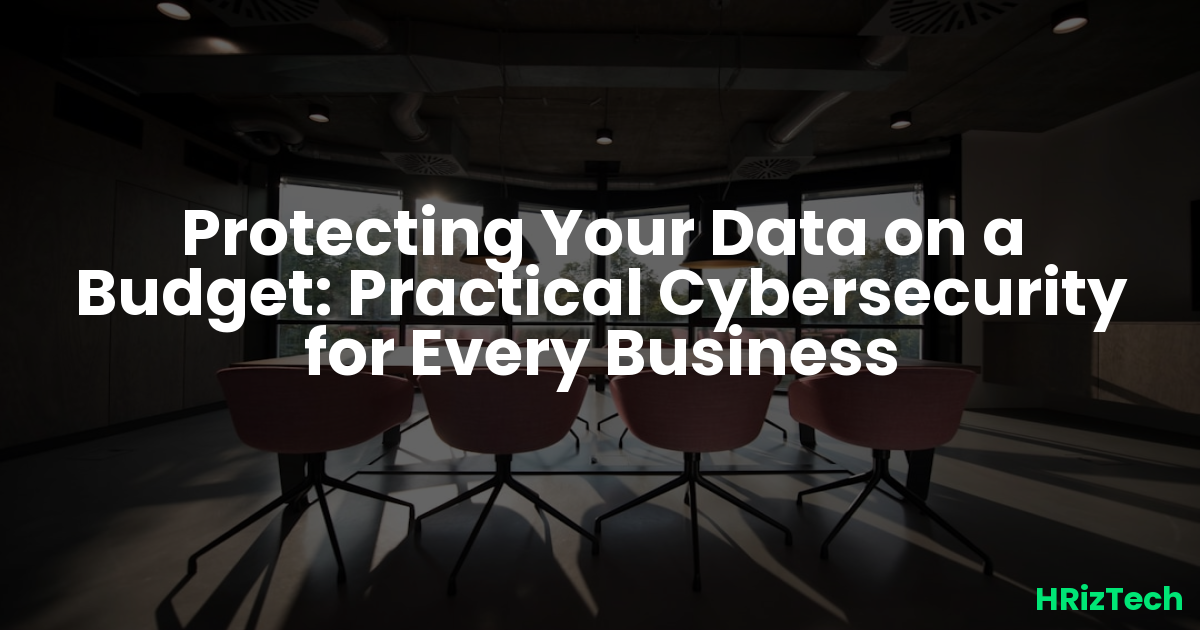Protecting Your Data on a Budget: Practical Cybersecurity for Every Business

Protecting Your Data on a Budget: Practical Cybersecurity for Every Business
Cybersecurity can feel like a luxury for small businesses or those with limited IT budgets. The truth is, robust data protection isn't about spending a fortune; it's about making smart choices. This post will guide you through practical, cost-effective strategies to significantly improve your cybersecurity posture without breaking the bank. We'll focus on actionable steps that deliver real results, helping you protect your valuable data and maintain peace of mind.
Fundamental Steps: Building a Strong Cybersecurity Foundation
Before diving into specific tools, let's establish a strong foundation. These fundamental steps are crucial, regardless of your budget:
- Employee Training: This is your most cost-effective defense. Invest time in educating your employees about phishing scams, malware, and safe password practices. Regular, short training sessions are far more effective than one long, tedious one. Consider using free online resources or creating your own internal training materials.
- Strong Passwords and Multi-Factor Authentication (MFA): Implement a strong password policy and enforce MFA wherever possible. MFA adds an extra layer of security, significantly reducing the risk of unauthorized access, even if passwords are compromised. Many services offer MFA at no extra cost.
- Regular Software Updates: Keep your operating systems, applications, and antivirus software up-to-date. These updates often include crucial security patches that protect against known vulnerabilities. Automate updates whenever possible to ensure they don't get overlooked.
- Data Backup and Recovery Plan: This is non-negotiable. Regularly back up your critical data to an offsite location (cloud storage is a cost-effective option). Develop a recovery plan outlining how you'll restore your data in case of a disaster. Test your recovery plan periodically to ensure it works.
Affordable Cybersecurity Tools and Strategies
While fundamental practices are essential, certain tools can enhance your security significantly without emptying your wallet:
- Free Antivirus Software: Several reputable antivirus programs offer free versions with robust protection. While they might lack some advanced features of paid versions, they are often sufficient for small businesses.
- Cloud-Based Security Solutions: Cloud services often provide affordable security features, such as data encryption and access controls. Explore options that integrate with your existing cloud storage and applications.
- Open-Source Security Tools: Many open-source security tools are available, offering comparable functionality to commercial products at a fraction of the cost. However, be aware that these often require more technical expertise to set up and manage.
- Firewall (Hardware or Software): A firewall, either built into your router or as a separate software application, acts as a barrier, protecting your network from unauthorized access. Many routers include basic firewall functionality at no extra cost.
Beyond the Basics: Prioritizing Your Security Investments
Budget constraints necessitate prioritization. Focus your resources on the areas posing the greatest risk to your business. Consider conducting a risk assessment to identify your vulnerabilities and allocate your budget accordingly. This might involve consulting with a cybersecurity professional for a limited-scope assessment, even if a full-scale audit isn't feasible.
Remember: Cybersecurity is an ongoing process, not a one-time fix. Regularly review and update your security measures to adapt to evolving threats. Staying informed about the latest cybersecurity trends is crucial for maintaining effective protection.
Conclusion: Taking Control of Your Cybersecurity Destiny
Protecting your data on a budget is entirely achievable. By implementing the strategies outlined above, you can build a robust cybersecurity posture without significant financial investment. Remember that proactive measures are far more cost-effective than reacting to a data breach. Start with the fundamentals, gradually incorporate affordable tools, and prioritize your efforts based on your specific risks. What cost-effective cybersecurity measures have you implemented? Share your experiences and tips in the comments below – let’s learn from each other!
Comments
No comments yet. Be the first to comment!